INESC TEC and the ocean exploration: full steam ahead!
Projects represent 60M€ to develop and transfer sea-related technologies
About 60M€, distributed by 18 projects, will be used to develop and transfer sea-related technologies until 2018. INESC TEC has been investing in the development of prototypes in this sector in order to create a cluster of technological competences for the sea in Portugal, more specifically for the deep sea. The Institute hopes to play a fundamental role in the extension of the Portuguese Continental Shelf.

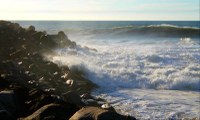
Extension of Portuguese Continental Shelf will boost the growth of the country’s area to about 4 million km2
The extension of the Portuguese Continental Shelf will allow the country’s area to grow up to 4 million km2, which is 40 times the current area of the country.
The request for the extension is now being analysed by the UN, and INESC TEC is aware of the impact that the acceptance can have in Portugal. For that reason, the institute is developing systems (methodologies, software and hardware) capable of meeting the needs of the country for the Sea area over the next years.
It is estimated that until 2018 INESC TEC will be developing 10 to 12 prototypes for this sector.
StrongMar - the project that will empower researchers
Researchers will be developing methodologies, software and hardware that will be serving the needs of the maritime sector. It was for that reason that INESC TEC started project StrongMar, where INESC TEC is leader. The project is the result of the efforts of INESC TEC and CINTAL (the Algarve Technological Research Centre). Its goal is to provide scientific, technological and economic training to a national research group, in partnership with top international partnerships, such as Universitat de Girona, University of Aberdeen, Heriot-Watt University and NATO Science & Technology Organization.
According to Eduardo Silva, coordinator or INESC TEC’s Centre for Robotics and Autonomous Systems (CRACS), “with StrongMar we want to improve the qualifications of our human resources, increase Portugal’s scientific and technological potential by bringing more European funding. We also want to promote a sustainable exploitation of the scientific, technological and economic potential of the Sea.”
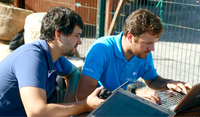
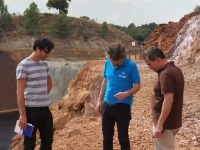
Several activities will be organised as part of the StrongMar to meet these goals, such as summer and winter schools, short and long scientific meetings, science and technology transfer meetings, networking meetings, conferences, submission of European projects with academic and industrial partners, or the participation in fairs and international conferences.
Until 2018, StrongMar will be receiving one million euros as part of the EU H2020 programme.
18 projects: five European, six national, four EEA Grants, and three scientific training projects
Of the 18 ongoing sea-related projects, five are European R&D projects, six are national R&D projects, four are funded by the EEA Grants programme, and three are scientific training projects.
Besides these projects, INESCTEC is also participating in four collaboration networks in this area, three European and one national.
“With all these projects, INESC TEC is empowering national companies for new markets and transferring technological solutions which have an impact on the economy of the sea”, explains Augustin Olivier, executive advisor to the Board of INSC TEC.
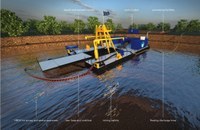

The European R&D projects
36.6M€ is the total budget of European R&D sea-related projects where INESC TEC is participating.
iVAMOS! and UNEXMIN are focusing respectively on the exploitation of mines and flooded mines. The first started in 2015 and will be concluded in 2018. The project features 17 partners from 9 European countries and will be receiving 9.2M€ to conduct tests in different mines in Europe, including in Portugal - the mines of S. Domingos in Alentejo, and Bejanca in Guarda. Another project is the UNEXMIN, which will be receiving about five million Euros, distributed by 13 organisations from seven European countries. The goal is to validate systems in the uranium mine of Urgeiriça (Viseu, Portugal) in June 2018, the feldspar/quartz in Kaatiala (Finland) in March 2018, and the mercury mine of Idrija (Slovenia) in October 2018.
The goal with project SUNNY, which will receive 9.6M€, is to build robots capable of improving the security of European borders. Although project ICARUS was concluded in April, thanks to this 12.6M€ project it was possible to test robots to support search and rescue operations in the event of major catastrophes.
CINMarS is another European R&D project where INESC TEC is participating. The goal is to identify business opportunities for the sea, particularly using spatial technologies, as well as develop actions that promote the collaboration and synergies in two areas - sea and space. The project’s budget is 300 thousand Euros.
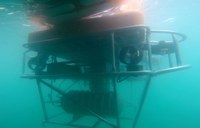
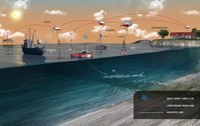
The national R&D projects
The national R&D projects are: TURTLE (the first underwater for the deep sea in Portugal, 620k€), CORAL (sensors for exploring deep sea resources, 2M€), MY TAG (monitoring and following soles in the ocean, 160k€), 3Port (managing port processes in an integrated way; this project was applied in the Port of Leixões, making it one of the most modern and efficient in Europe, 430k€), SCAN (calibration systems for aquaculture, 230k€), MareCom (alternative solution to satellite and VHF radio technologies for communications at sea, 650k€).
The EEA Grants projects
INESC TEC is currently working on four projects funded by the EEA Grants project, and is leader in one of them.
BLUECOM+ (accessing Internet over 100 km off the coast, 250 thousand Euros) and ENDURE (using robotic platforms for long periods of time in remote areas of the ocean, 210 thousand Euros) are the two projects INESC TEC is leading.
The other two projects are MarinEye (300 thousand Euros) - an oceanic monitoring platform - and SeaBioData (180 thousand Euros), where the goal is to generate data on the biodiversity in seamountains in Portugal.
The scientific training projects
Two of the three scientific projects are internal – TEC4SEA (unique and pioneer platform in Europe to promote research, develop and test marine robots to operate at sea, where the goal is to provide services to the academic and industrial community developing maritime technology, 5.4M€) and StrongMar (1M€). The third project is external – EMSO PT (Portuguese component of a European research infrastructure for deep sea and water column observatories, 10.3M€).
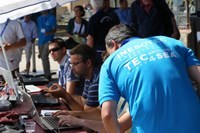
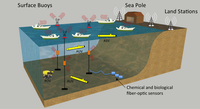
The collaboration networks
INESC TEC is also present in four collaboration networks where the sea plays a fundamental role: the EITKIC RawMaterials - European Institute of Innovation & Technology (the strongest partnership created for the raw materials sector), the ERDEM - Environmentally Responsible Deep-sea Mining, a commitment with the European Innovation Partnership (EIP) on Raw Materials, the euRobotics (European organisation that brings together the most important experts in this area), and the Fórum Oceano (an association that supports the development of maritime activities in Portugal).
“All these projects mean that we are part of a network of 100 partners, with whom we create synergies to take a step forward in the research in this area. Of the 60M€ representing all 18 projects, INESC TEC will be absorbing approximately 20% and is leading four”, Eduardo Silva explains.
Until 2018, INESC TEC hopes to register three to five sea-related patents, to perform 36 operations at sea, to publish approximately 24 papers in international journals, and to increase the workforce in about 10 workers per year, as well as have other projects approved.
Other sea-related projects at INESC TEC
INESC TEC has already participated in other sea-related projects, represented by different Centres.
The goal with European project CARLoS (CooperAtive Robot for Large Spaces manufacturing), developed by the former Centre for Robotics and Intelligent Systems (CROB), was to develop a prototype for a mobile robot manipulator for fit-out operations of ship cabins. Project CARLoS received 36.6M€ worth of funding from the EU.
WiderMos is the name of yet another European project, developed by INESC TEC’s Centre for Information Systems and Computer Graphics (CSIG), focusing on port authority management. The goal with this project is to improve the interface between maritime transportation and other means of transportation, mainly railways, developing new connections between ports, ships and trains, integrating different points of departure and destinations.
The goal with project MIELE (Multimodal Interoperability E-services for Logistics and Environment Sustainability), promoted by INESC TEC’s CSIG, was to implement a Unique Logistic Window as a network to interoperate platforms.
Cooperation and Perception for Augmented Autonomy is another national project led by INESC TEC, where the goal was to develop networks of underwater and underground sensors.


In project TWENTIES (Transmission system operation with large penetration of Wind and other renewable Electricity sources in Networks by means of innovative Tools and Integrated Energy Solutions), concluded in December 2013, INESC TEC was the only Portuguese partner. The goal was to demonstrate the existence of favourable conditions for the integration of renewable energies, including offshore wind power in the European electricity system, as well as the need for a more active participation of renewable sources of energy in certain services that are fundamental for the operation of the electricity grid This project brought to INESC TEC’s Centre for Power and Energy Systems (CPES) new and complementary skills in an emerging area – direct current high voltage grids. Project TWENTIES involved 63M€.
AQUAMONITOR is the name of a project led by INESC TEC. The project lasted between 2011 and 2012, and its goal was to develop new sensors for monitoring the quality of water in real time in aquaculture. INESC TEC was represented in the project by its Centre for Applied Photonics (CAP) and partners included CIIMAR, CIQ FCUP and the University of Pécs in Hungary.
Other projects in which INESC TEC participated, represented by CSIG, are RAIA (Iberian Coast Oceanographic Observatory), RAIA.co and RAIA TEC. The goals included implementing a cross-border oceanic observation network that would make it possible to consolidate the operational oceanography in the Iberian coast, creating new scientific and technological opportunities for boosting the economy of the sea. These projects featured different Portuguese and Spanish organisations.
Project SCOPe (Electronic Port Community System), also developed by CSIG, started in October 2002 and was concluded in June 2005, and featured a budget of 3M€. The goal with this project was to modernise the Port of Leixões by implementing an organisational model that would make it possible to electronically manage the processes related to the circulation of cargo in the port.
Project PROTEU (Advanced Optical Sensor for Monitoring Estuarine and Coastal Environments) is one of INESC TEC’s oldest projects in this area. The project was concluded in 2002 and was developed by INESC TEC’s Centre for Applied Photonics (CAP). This project resulted in two prototypes, which have been installed in the Ria de Aveiro, a lagoon in Portugal. One of the prototypes consisted of a sensing system featuring an optical fibre sensing system with Bragg networks.
The INESC TEC researchers mentioned in this news piece are associated with P.Porto–ISEP and INESC TEC.


